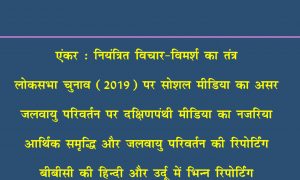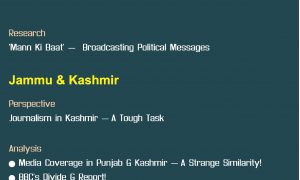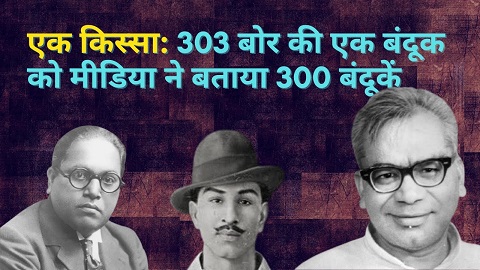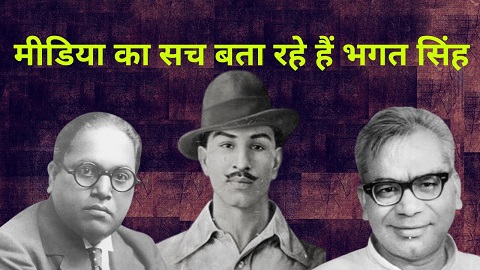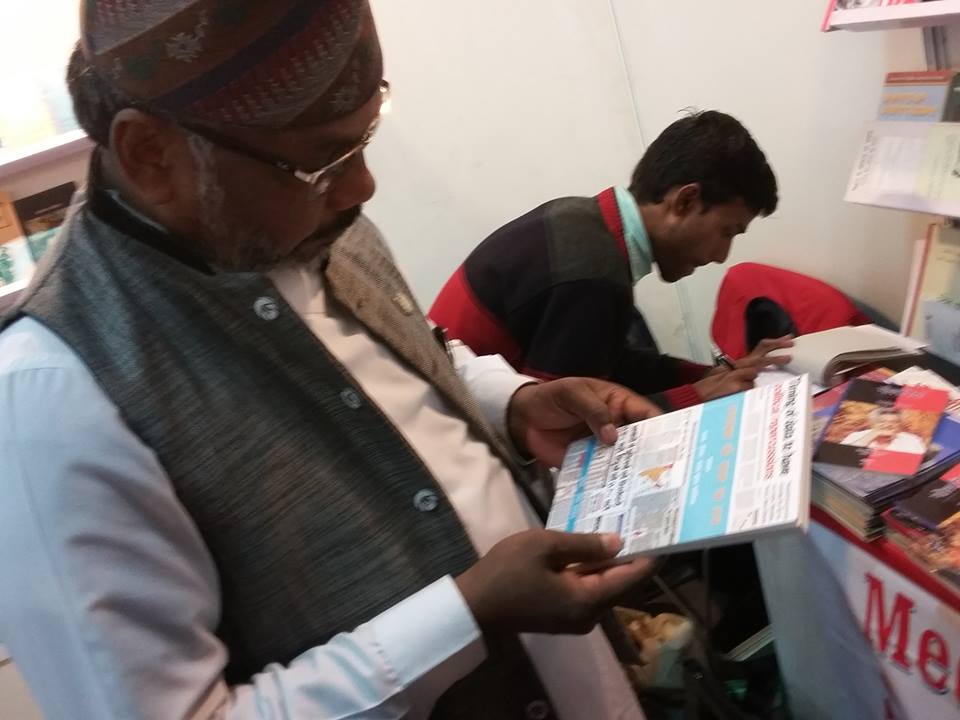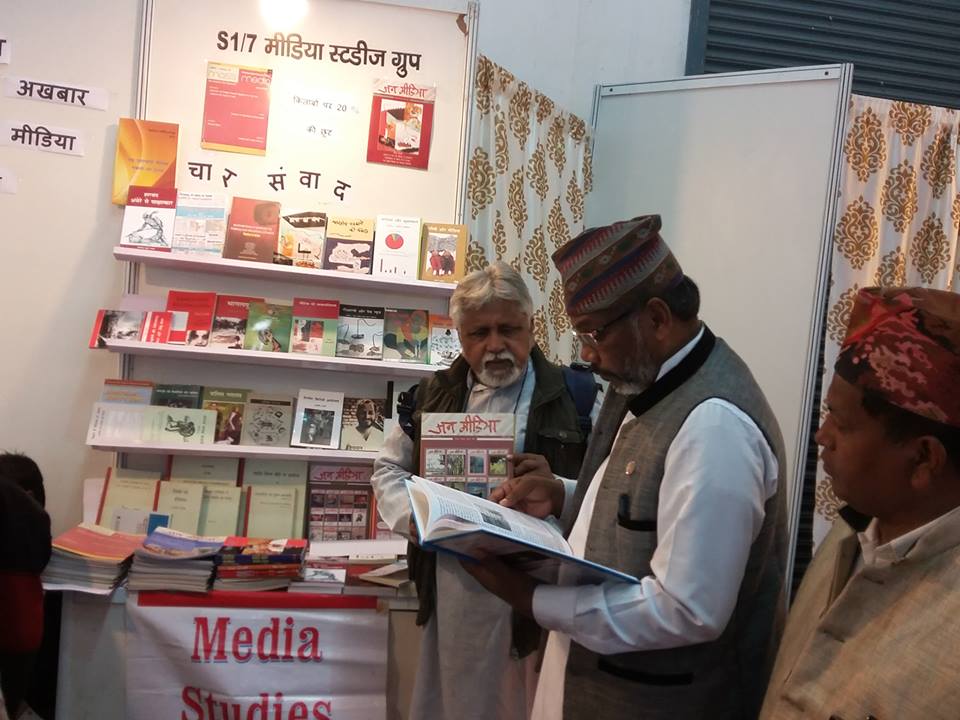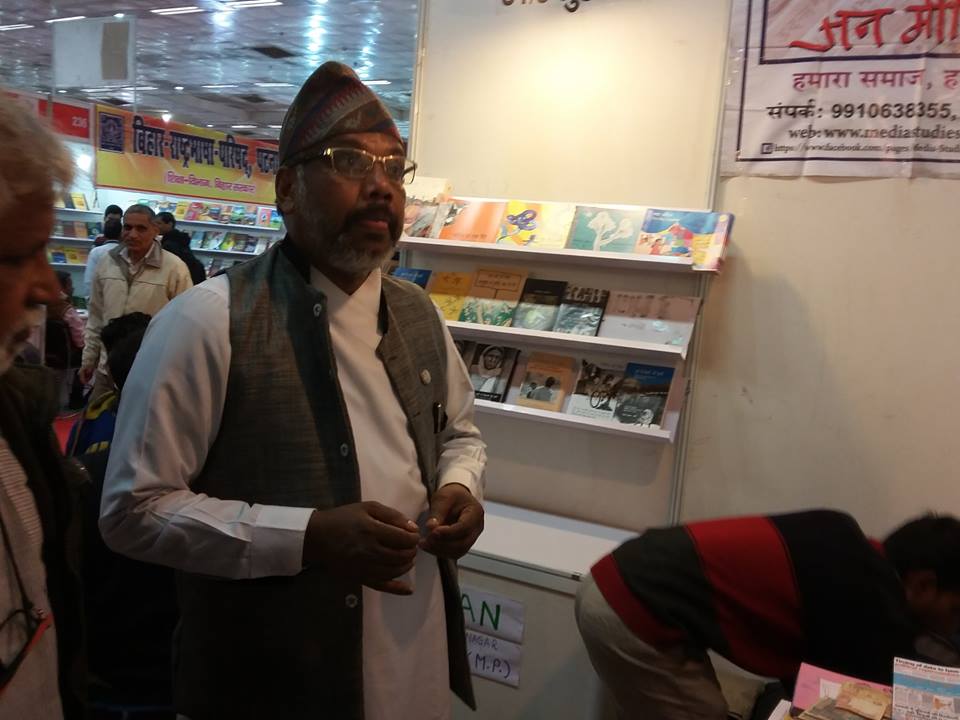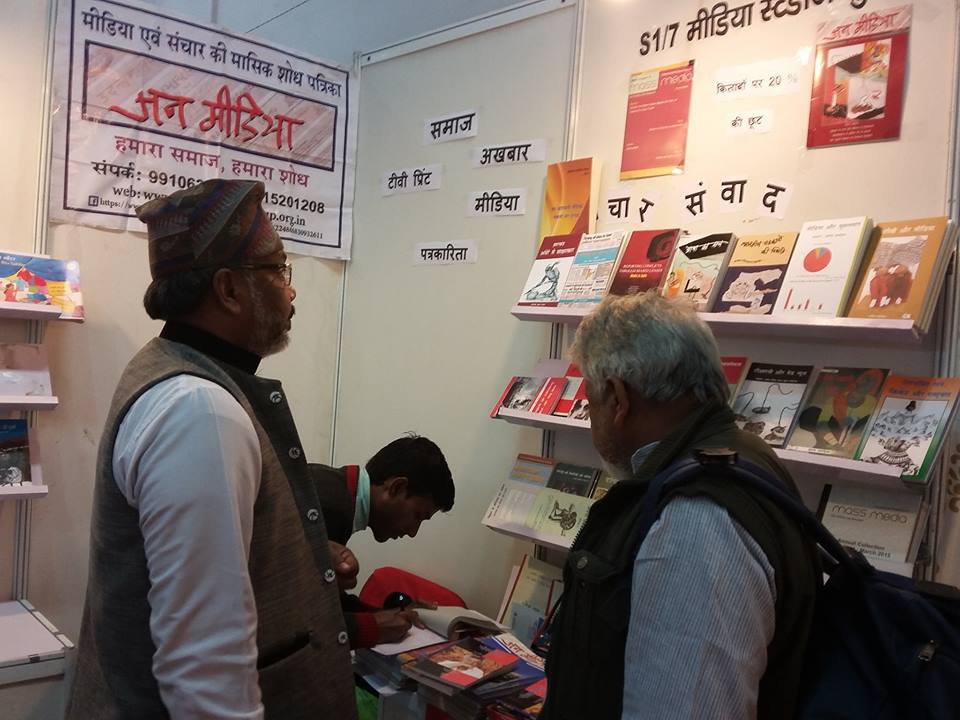Events, Media Coverage in Punjab during 1984 and Presently in Kashmir Bear Resemblance.
The manner and intent of the Indian Establishment in sending the Indian army to the Golden Temple in Amritsar on 3 June 1984 and degradation in the special constitutional status of Jammu and Kashmir on 5 August (2019) bear a lot of similarities.
Both actions were sudden and unexpected and carried with excessive use of the armed forces. The two events were concerted swoops intended to shock and bamboozle the targeted people of Punjab and Kashmir, rendering them numb and reactionless.
As a journalist reporting for a “national news agency” from Amritsar, the epicentre of the troubled Punjab during the 1980s, I witnessed that feverish attempts were made to generate public opinion for justifying the sending of heavy forces to a religious place. For that purpose, the government hyped and propagated some flimsy grounds through the docile domestic mainstream media.
Spreading disinformation was the main strategy as manufactured and fake news invariably made headlines in the newspapers, black painting the then ‘dharamyudh morcha’ (agitation) launched by the Akalis from the Golden Temple in pursuance of their demands.
The morcha was projected as a “Pakistan-inspired separatist agitation’…. “a ruse for housing criminals in the religious place”; “the morcha posed a palpable threat to the country’s unity and integrity”. Even isolated killings in Punjab were portrayed as “Sikhs are killing Hindus”. All routine crimes and violent incidents were bundled up into one head: “Sikh terrorists killed … (so many) … attempted to looted, hijack …. and so on”. Such an impression was also dispersed through frequent bulletins relayed by the government-controlled All India Radio and Doordarshan.
Official intelligence agencies worked overtime to polarise and divide the Punjab society, pitting Hindus against Sikhs. No doubt, some violent incidents did take place because of the surcharged atmosphere during the nearly two- year-long Akali agitation when two lakh Sikhs courted arrests. The Hindi press played a dirty role in painting the Golden Temple Complex as the fountainhead of “Sikh terrorism”, dismissing its 100-year long history of the 18th century when the shrine had been a rallying point of Sikh warriors in their fight against Iranian and Afghan invaders out to make Punjab a part of Afghanistan.
Even my colleague journalists reporting for “national newspapers” from Amritsar never bothered to highlight the latest history and Sikh traditions when the Akalis were the lone political party to launch a “morcha” (agitation) from Golden Temple against the 1975 Emergency clamped by Indira Gandhi which was participated by BJP leaders like L K Advani.
Now, in Jammu and Kashmir, the same strategy was adopted by the New Delhi establishment for whipping up intended propaganda prior to the 5 August action. Television and electronic media outlets took up a leading role and invariably quoted intelligence agencies’ sources for projecting the jihadi threat in the valley. “Fear from Pakistan and Pak-sponsored terrorists” splashed the mainstream media space with added impact from stage-managed high-pitch discussions. Media dispatches rarely referred to the fact Jammu and Kashmir was given “special status” in the Constitution because it joined the Indian Union later on its own volition and under some conditions. And the sovereign princely state spurned all attempts of Pakistan to forcibly occupy the territory through blackmailing tactics.
The government used the media to the hilt to deliberately suppress and disconnect closely related past in the cases of the Sikh agitation of the 1980s and the Kashmiris’ stand on Article 370. All that was intended to raise the “nationalistic fervour” among the large Indian population that their “Punya Bhoomi” (sacred motherland) was being “vivisected and defiled by anti-national elements”. Isolating from the proper perspective, the government intentionally propagated J&K as if it is mere “real estate” by repeating endlessly that “Kashmir is an integral part of India”.
Just before launching the army action on the Golden Temple, an unprecedented curfew was imposed on entire Punjab and with excessive use of armed forces completely cut it off from the outside world. Similarly, J&K, particularly the Kashmir valley, was virtually caged by gun-toting soldiers before initiating the process of lowering the “special status” of the state.
During the early 1980s, the media and official communique propagated for the general public that the army operation was confined to the Golden Temple and meant to eject and finish off Jarnail Singh Bhindranwale and his armed men “holed up” there. But, the fact was rarely known outside Punjab that four dozen other Sikh shrines located at other places were simultaneously attacked by the army to flush out from there what they called the “potential Sikh terrorists”
To crush Sikh dissent for all times to come, a larger number of armed soldiers conducted night raids on Sikh villages to pick up and eliminate youths who could be “potential threat” to the officially envisaged “peace and normalcy” after the army swoop on the Golden Temple. The army operation in rural areas made Sikh youths to flee homes for safety and it was given a fanciful codename, “Operation Woodrose”.
As the follow-up to both of the army actions in Punjab and J&K, a barrage of manufactured and fake reports were circulated and stage- managed inspired visuals and spectacles created to occupy larger space on electronic and social media sites. This exercise was aimed at inculcating a sense of “bigger achievement” in the client section of the majority community.
It has been recorded in the books on media coverage (‘June Chaurasi Di Patarkari’2 in Punjabi language —Media Coverage of 1984 and “Embedded Journalism, Punjab”3 ) that strict censorship was imposed on the press in Punjab two days prior to the army action and lasted for three weeks later on, besides several underhand tactics engineered by the government to get a favourable flow of news-items.
For example, my rival news agency put out a “social survey” of Amritsar city just a fortnight after completion of army action (10 June, 1984) which said the city people and Sikhs “are feeling relieved after the army restored ‘Maryada’ (religious code of conduct) in the Golden Temple following its clearance of the gun-toting criminals”. That widely circulated story in newspapers was missing in my dispatches which perturbed my Editor-in-Chief in New Delhi who pulled me for “not writing positive stories that could help in fast normalising the situation in Punjab”.
To my utter surprise, the same type news-items are seen splashed in the media that “Kashmiris are feeling relieved after the withdrawal of Article 370 …. There is no terrorist activity in the valley…. People celebrated ‘Eid with gusto….. Some reasonable restrictions there to be removed gradually”. The mainstream media rarely refer to “complete lockdown of the valley’’, snapping all communication network like telephone and internet and imposing a “comprehensive information blackout”.
As the flow of factual news has been blocked and the so-called national media that only exists outside the valley is free to carry news that strengthens the official jargon about J&K.
The same official strategy was at work in Punjab during the army action that the sizeable local press in Amritsar was not allowed to attend briefings held by army officials just after the operation on the Golden Temple ended. Rather, chosen media persons from Delhi and Chandigarh were flown to Amritsar and briefed by an army general to get publicity for “successful army action conducted with a precision”. Thus, an attempt was made to blackout killings of hundreds of innocent Sikhs, including women, children and the old who got trapped in the shrine on the auspicious occasion of observing the martyrdom day of Guru Arjun Dev on 4 June (1984).
Even though the two actions are separated by a time gap of 35 years, the same political expediency necessitated them to happen. Such strike-downs were meant to kick up Hindu nationalism facilitating the consolidating of the majority community to be translated into “vote-bank” politics. The concomitant bashing up of minorities and projecting them as “anti-nationals” and a threat to India’s unity and security have been the palatable feed of rabid Hindu nationalism.
Tracking history, the above said practice had begun much earlier at the outset of the 20th century when Hindutva began taking shape -which surfaced and retreated as suited the Congress— during the Indian freedom movement. But Congress leaders strategically chiselled the Hindu religion and culture towards the building of a Nation-State based on the Hindu identity in the highly diverse Indian sub-continent.
During the 1930s, the Hindu brand of nationalism got overwhelmingly hegemonic within the Congress which had a larger base among the Hindus and negligible presence of Muslims. This dispensation, later on, obstructed the Congress’s political settlement with the Muslim League in 1940s. Rather, it led to the drawing of battle-lines between the two contending parties, ultimately bringing about a bloody Partition in its wake and diminishing of possibilities of setting up a federal
type of governance in the sub- continent.
Following the transfer of power by the outgoing British in 1947, the Congress inherited a centralized strong power centre at New Delhi. Obsessed with achieving a territorial unity and retaining of socio-religious affairs within the Brahmanical framework of the caste-ridden Indian society, the Congress rulers further centralised the powers which entailed snubbing of all sort of dissent of the minorities and their aspirations. The process peaked during the Indira Gandhi regime in the early 1980s.
In the case of Sikhs, who too projected themselves as a “nation”, got pitchforked in the centralised power structure. They were denied all solemn promises the Congress made them during pre- Independence days like allowing them to “experience a glow of freedom’’ in Punjab having a sizable Sikh population there. But Instead of accommodating the Sikhs politically, Congress chose to snub them by refusing them their separate identity and describing them as part of the larger Hindu society. That is why, Sikhs remained on the war-path with New Delhi since the 1950s. And several agitation programmes taken up by the Sikhs for a due share in power were viewed as secessionist, culminating in the launching of a “dharamyudh morcha” from the Golden Temple in August 1982 for more autonomy to the state.
The June, 1984 army action in Punjab and suppressing of Akalis with a heavy hand gave instant political dividends to the Congress with the majority Hindus rallying around the party. After her assassination, her son Rajiv Gandhi heading the Congress emerged as “saviour of India’s unity and security” and won a record number of 404 seats in the December, 1984 Lok Sabha polls. But, the political process of instilling insecurity among the majority and hate against the Sikh minority resulted in the massacre of the Sikhs in November, 1984 and metamorphosing Indian democracy into a “majoritarian dispensation”.
A fertile ground, thus, got prepared for Hindutva politics went to strengthen the Hindu nationalists and their political outfit, the Bharatiya Janata Party (BJP). The majoritarian polity which largely thrives on minority bashing has now come to stay in India and the well-entrenched Hindutva is fast paving way for thwarting even semblance of democracy for setting up “Hindu Rashtra”
References:
1. Kumar, R.N. (2008). Terror in Punjab–Narratives, Knowledge and Truth. Shipra Publications.
2. Sidhu, J.S. (2016). ‘June Chaurasi Di Patarkari’, Punjabi language. Singh Brothers Pub-lishers. Amritsar
3. Edited by Sidhu, J.S & Chamadia, Anil (2014). Em-bedded Journalism. Media Studies Group. Delhi


